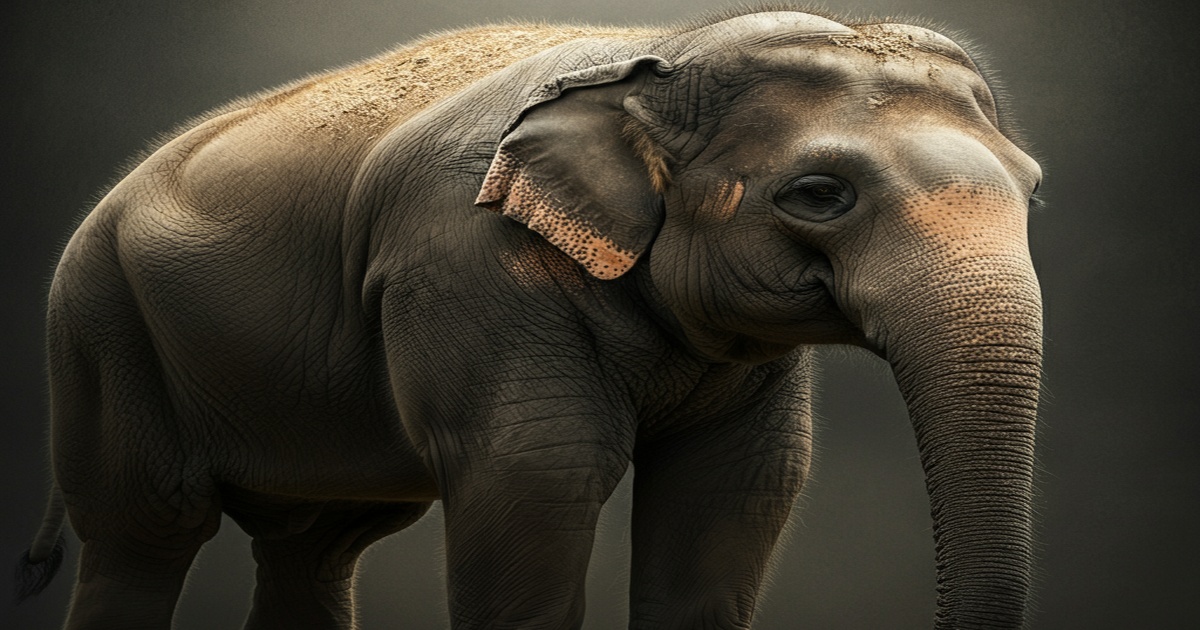In Uttarakhand, northern India, a baby elephant named Bani was grievously injured after being hit by a speeding train. Thrown from the tracks and injured upon landing in a nearby field, the young elephant was initially paralyzed and later transported to the elephant hospital in Mathura, Uttar Pradesh, where she received life-saving treatment.
At the hospital, Bani was diagnosed with spastic paraparesis—a condition affecting the mobility of her back and hind limbs—that left her unable to move for several months. Veterinarians and caregivers employed a variety of treatment methods, including ayurvedic remedies, oil massages, hydrotherapy, and even acupuncture, in an effort to restore her strength and mobility.
Over weeks of rigorous therapy, including regular sessions in a hydrotherapy pool and structured physical rehabilitation, Bani eventually began to stand and walk. Her progress, captured in videos showing playful moments and interactions with her surroundings, garnered widespread attention and became a symbol of recovery and hope.
Despite her remarkable progress, Bani continues to face challenges; she now has an abnormal gait that limits the distances she can comfortably travel. To protect her sensitive hind legs, she wears specially designed shoes, and her caregivers have created an enriched environment complete with a mud hole—a favorite playground where she can bathe and relax.
Local wildlife organizations, notably Wildlife SOS, have been deeply involved in Bani’s care, emphasizing the special bond she has formed with her staff and keepers. The team's dedication to her rehabilitation not only highlights the innovative approaches in veterinary care but also serves as an inspiration, reflecting the resilience of both the animal and the caregivers who support her.
Wider efforts to address similar incidents have been noted in India, where train collisions with elephants have resulted in numerous fatalities over the past decade. In response, officials are considering the implementation of AI-powered systems to detect elephants near train tracks, aiming to reduce future accidents and ensure the safety of these majestic creatures.







8 Comments
Marishka
Bani's story shows that we can create positive change and ensure a future where elephants and humans can co-exist in harmony.
Pupsik
Is all this treatment really necessary for an animal? Shouldn't we prioritize human healthcare instead?
Marishka
This story highlights the intelligence of elephants and their capacity for healing and recovery. It challenges our assumptions about animal capabilities.
Pupsik
I'm grateful to organizations like Wildlife SOS for their tireless work in rescuing, rehabilitating, and protecting animals like Bani.
Marishka
Seeing a creature as majestic as an elephant regain her mobility is inspiring. It gives hope for a future where all animals can live free from harm and suffering.
Bella Ciao
This story is heartwarming, but I worry it distracts from the bigger issue of habitat destruction impacting these elephants.
Coccinella
I appreciate Wildlife SOS's efforts, but I wish more focus was placed on preventing such accidents rather than treating the aftermath.
Michelangelo
The dedication and love shown by her caregivers is truly heartwarming. Their efforts show the incredible bond we can have with animals.